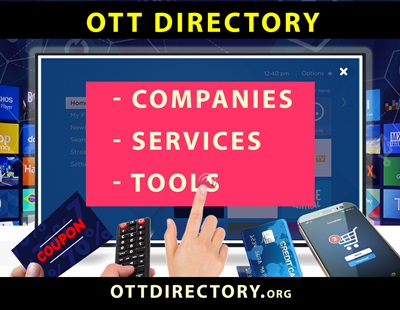Automatic Blurring Tools

Automatic blurring tools get rid of unwanted graphics in video content, such as faces of individuals without release forms, trademarks, brand logos, or other undesired icons. These tools solve key problems such as maintaining privacy, avoiding legal issues, and ensuring content compliance. Leveraging advanced AI and machine learning capabilities, these tools continuously improve detection and blurring accuracy, adapting to new content types. They offer features like face detection and blurring, object recognition, and motion tracking to ensure dynamic content remains appropriately obscured. Automation options and batch processing capabilities minimize manual intervention, saving time for media producers. Customizable blur levels, integration with popular editing software, and cross-platform availability provide flexibility and control over the blurring process. Media producers and OTT service providers should explore automatic blurring tools to improve content quality, protect privacy, and streamline video production workflows.
Automatic Blurring Tools
Adobe Premiere Pro – Includes automatic blurring capabilities within its comprehensive video editing suite to enhance privacy.
Amazon Rekognition – Delivers automatic blurring features as part of its comprehensive image and video analysis service.
Azure Media Services – Azure Media Services by Microsoft provides cloud-based video transcoding with powerful encoding, packaging, autoblurring and streaming features.
Backscreen – Backscreen provides advanced content moderation and video review tools that help media companies to gather and manage user-generated content.
Bria – Bria.ai provides advanced visual generative AI solutions tailored for the media industry with ethical use of licensed content.
Corel VideoStudio – Offers automatic blurring tools as part of its video editing software to help protect sensitive information.
DaVinci Resolve – Provides advanced video editing and automatic blurring features for post-production workflows.
Filmora Wondershare – Filmora Wondershare is a user-friendly video editing software with cloud integration for easy sharing and collaboration.
Google Cloud Video Intelligence – Provides advanced automatic blurring and object detection capabilities for video content through AI-powered solutions.
IBM Watson Video Enrichment – Utilizes AI to provide automatic blurring and metadata extraction for video content to ensure privacy and compliance.
Kaltura – Kaltura provides an open-source video platform for video management, ad exchange network broadcasting, and delivery.
MovAVI Video Editor – Provides easy-to-use video editing tools with automatic blurring features.
OpenCV – Offers a range of computer vision tools including automatic blurring for video processing and privacy protection.
Pixalate – Offers automatic blurring tools to ensure sensitive information in videos is obscured, enhancing privacy and compliance.
Shotcut – Shotcut is an open-source, cross-platform video editor with cloud collaboration and advanced features, suitable for professionals and amateurs alike.
Sighthound – Provides automatic blurring and object detection solutions for enhancing privacy in video content.
VSDC Free Video Editor – Offers automatic blurring capabilities in its free video editing software to protect sensitive video content.
Automatic Blurring Tools Key Features
AI and Machine Learning Capabilities
Leveraging advanced AI and machine learning for improved detection and blurring accuracy over time. This ensures the tool continuously improves, adapting to new types of content and enhancing precision in blurring unwanted elements.
Automation Options
Advanced automation features to minimize manual intervention and streamline the blurring process. This is important for increasing efficiency and reducing the workload for media producers, allowing them to focus on other creative aspects of video production.
Batch Processing
The ability to process multiple videos at once, saving time for media producers handling large volumes of content. This feature is essential for efficient workflow management, particularly in environments with high video production demands.
Cross-Platform Availability
Availability on various operating systems and devices to ensure accessibility and convenience. This flexibility is crucial for media producers who work in diverse technical environments and need consistent performance across different platforms.
Customizable Blur Levels
Options to adjust the intensity and style of the blur to meet different content requirements. This feature is important for ensuring the blur effect matches the specific needs of each project, providing flexibility and control to the user.
Detailed Reporting and Analytics
Providing insights and reports on the blurring process, including error rates and processing times, to help improve workflow efficiency. This transparency is vital for understanding the tool’s performance and making informed decisions to optimize video production processes.
Face Detection and Blurring
The ability to automatically detect and blur faces of individuals who have not signed release forms. This feature is critical for complying with privacy regulations and protecting the identities of individuals who have not consented to appear in the video.
Integration with Editing Software
Compatibility with popular video editing software to streamline the post-production process. This integration is important for ensuring a smooth workflow, allowing producers to easily incorporate blurring tools into their existing editing systems.
Manual Override
Options for manual adjustment or override to ensure accuracy in cases where automatic detection might fail. This flexibility is crucial for maintaining control over the blurring process and ensuring high-quality results.
Motion Tracking
Ensuring that the blur remains on the moving object throughout the duration of the video. This feature is essential for maintaining the effectiveness of the blur on dynamic content, ensuring that unwanted elements remain obscured even as they move.
Object Recognition
Capability to recognize and blur specific objects such as trademarks, brand logos, or other undesired graphic icons. This feature is important for avoiding legal issues and maintaining the visual integrity of the video by selectively blurring only the necessary elements.
Real-Time Blurring
Blurring that can be applied in real-time during live broadcasts or streaming events. This capability is crucial for live content, allowing producers to comply with privacy and legal requirements on-the-fly without disrupting the broadcast.
Scalability
The tool should be scalable to handle both small projects and large-scale productions. This scalability is important for accommodating varying production needs, ensuring that the tool can grow with the user’s requirements.
Security and Privacy
Ensuring that the tool complies with privacy regulations and protects sensitive information during processing. This feature is critical for maintaining the trust of clients and viewers by safeguarding personal data and complying with legal standards.
Speed of Processing
Fast processing times to ensure efficient workflow, especially for time-sensitive projects. This feature is vital for meeting tight deadlines and ensuring that video production processes are not delayed by the blurring tool.
Support for Multiple Formats
Ability to handle various video media formats and resolutions, ensuring versatility in different production environments. This flexibility is important for media producers who work with diverse content types and need a tool that can adapt to different technical requirements.
Automatic Blurring Tools Glossary
- AI-based Blurring (AIB) – Utilizing artificial intelligence to enhance the accuracy and efficiency of automatic blurring processes by learning and adapting to different scenarios.
- Automated Blur Adjustment (ABA) – Feature that automatically adjusts the intensity and area of blurring based on predefined parameters or detected content changes.
- Batch Processing (BP) – The ability to apply blurring effects to multiple videos or a large number of frames simultaneously, improving efficiency.
- Blur Transition (BT) – Smooth transitioning of blurring effects when moving from one scene to another, ensuring seamless privacy protection.
- Compliance Filtering (CF) – Ensuring that the blurring tool adheres to specific regulatory requirements for privacy and sensitive information protection.
- Data Anonymization (DA) – Techniques used to remove or obscure personal identifiers within video content, ensuring data privacy.
- Dynamic Masking (DM) – The ability to change the blurring area dynamically as the video content or subject moves.
- Edge Detection (ED) – An image processing technique used to identify the boundaries of objects within a frame, aiding in precise blurring.
- Face Detection (FD) – Technology that identifies human faces within digital images or video frames, enabling automatic blurring of these faces for privacy and compliance.
- Frame-by-Frame Analysis (FBA) – Examining each individual frame of a video to ensure accurate and consistent application of blurring effects.
- Motion Tracking (MT) – Technology that follows the movement of objects or individuals in a video, allowing the blurring effect to move dynamically with the subject.
- Mask Refinement (MR) – Enhancing the precision of blurred areas to ensure that only the intended regions are obscured without affecting surrounding content.
- Noise Reduction (NR) – Techniques to minimize visual noise in blurred areas, maintaining overall video quality.
- Object Recognition (OR) – The process of identifying and categorizing objects within an image or video frame, allowing automatic blurring of specific unwanted objects.
- Privacy Masking (PM) – Techniques used to obscure sensitive information or individuals in video footage, ensuring privacy protection and regulatory compliance.
- Real-time Blurring (RTB) – The capability of a tool to apply blurring effects instantly during live video capture or streaming, ensuring immediate privacy protection.
- Region of Interest (ROI) – Specific areas within a video frame that are targeted for blurring, based on user-defined or automatically detected criteria.
- Selective Blurring (SB) – The capability to blur only certain parts of an image or video frame, such as faces, license plates, or brand logos.
- Temporal Filtering (TF) – Analyzing video frames over time to apply blurring consistently across similar scenes or recurring objects.
- User-defined Blurring Zones (UDBZ) – Allowing users to manually select areas within a frame that need to be blurred, providing greater control over the final output.

